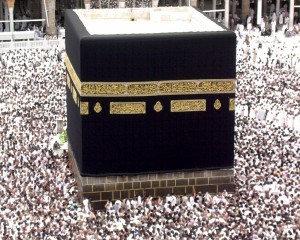To Islam & Beyond
Now that the Empire and Church were linked and less persecution of Christians occurred, the Church fathers studied the ancient books and worked on establishing on canon of scriptures. They decided that for books to be included in the New Testament they must have been widely used in the Church and they must have been written by the Apostles or their immediate followers. Disagreements about interpretation of the Godhead was also a constant threat to the unified Church, with Arianism and Trinitarianism being two major areas of conflict among others. By the end of the 4th century, trinitarianism, with God the Father, God the Son and God the Holy Spirit, was the established interpretation of the Godhead.
During this time, because of disagreements with the established Church which many felt was tainted with worldliness, people of faith separated themselves from society, some living as individual hermits, but eventually many hundreds living in communal monasteries. There they were able to pool their resources and spread their theology along with other ideas, such as agriculture. A few centuries later, because of threats from the Muslim armies in the south, they migrated to the north where they lived in the Germanic lands and played a role in converting the barbarians to Christianity.

The Muslim holy site Kaaba
Between the 4th and the 8th century, Germanic tribes such as the Goths, Vandals and Lombards from the north started to invade the Roman Empire and ended up dividing the Empire.
In 622 A.D. a new religion, Islam, spread throughout Palestine, Egypt, Northern Africa, and Spain. Mohammad, the new leader, taught his followers that there is only one God, Allah. The Muslims, as the followers of Mohammad were called, taught that Allah was the same God as the God of the Christians and the Jews.
Muslims prayed five times a day, with their face turned to the Mecca, their holy shrine. The Muslims were also taught to fight for their God, Allah, who would someday reward them. They actively fought for converts to their religion, winning much of the Holy Land in battle.
Constantinople was the Church center for the Eastern Roman Empire, and Rome continued to be the center for the west. The western side, the Catholic Church, spoke Latin and the eastern side, the Orthodox Church, spoke Greek. In 1054, the Great Schism occurred, which permanently split the state church of the Roman Empire into two entities: the Eastern Greek and the Western Latin branches. The split was caused by theological disputes and political differences.
In 1099 the first Crusade to recapture the Holy land from the Muslims Turks occurred; in the next 250 years, a series of crusades were undertaken, but ultimately, they were unsuccessful.
After all the Crusades failed, the people became discouraged with the leaders of the Church. In 1291 the Muslims ruled all of Palestine.
Peter Waldo from France, John Wycliff from England, and John Huss from Bohemia, among others, begin to preach doctrines, which the Catholic Church claimed were false. Those teachings were called heresy and specially-appointed people were asked to look deeper into these teachings. The new teachings were ruled by the Church as being against God and those found guilty of spreading these heresies either had to recant or they were executed.









 If you have any questions, suggestions or feedback or require more information about the hutterites, be sure to contact us
If you have any questions, suggestions or feedback or require more information about the hutterites, be sure to contact us